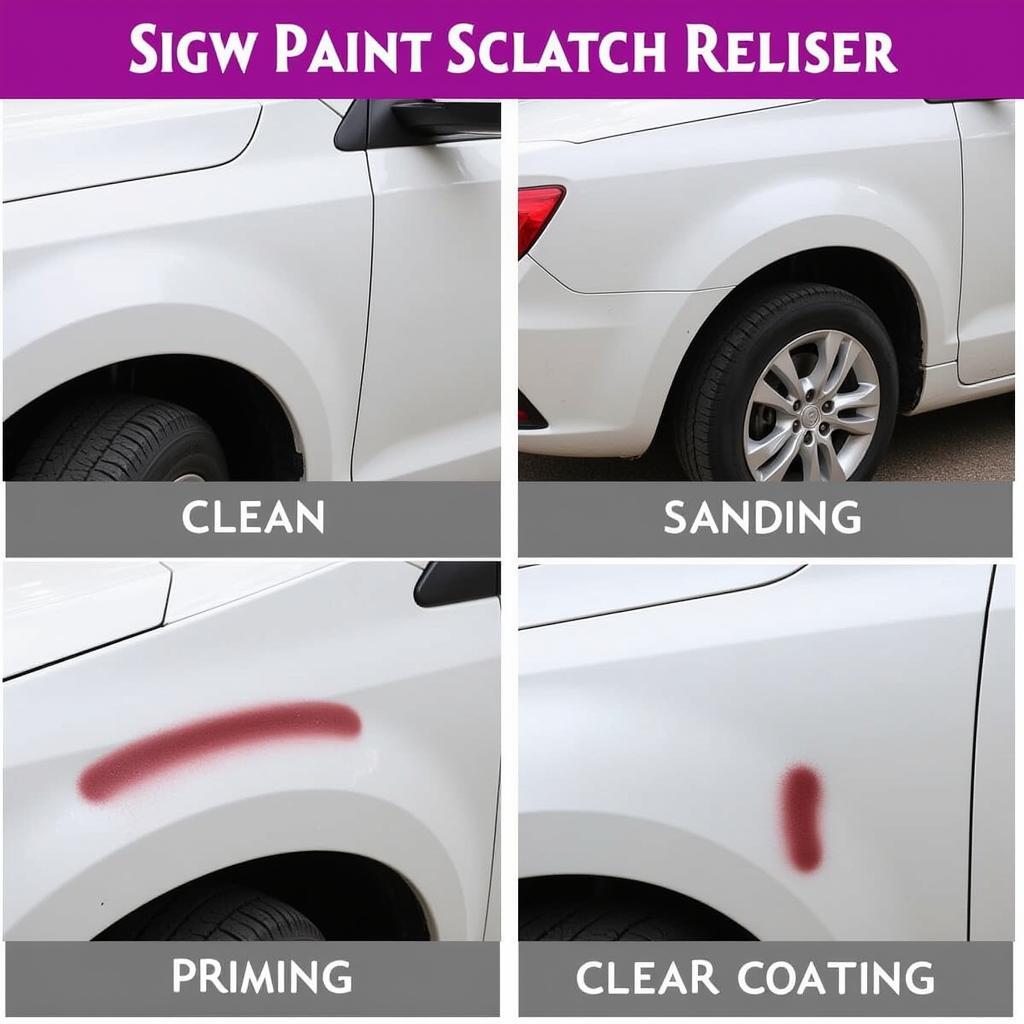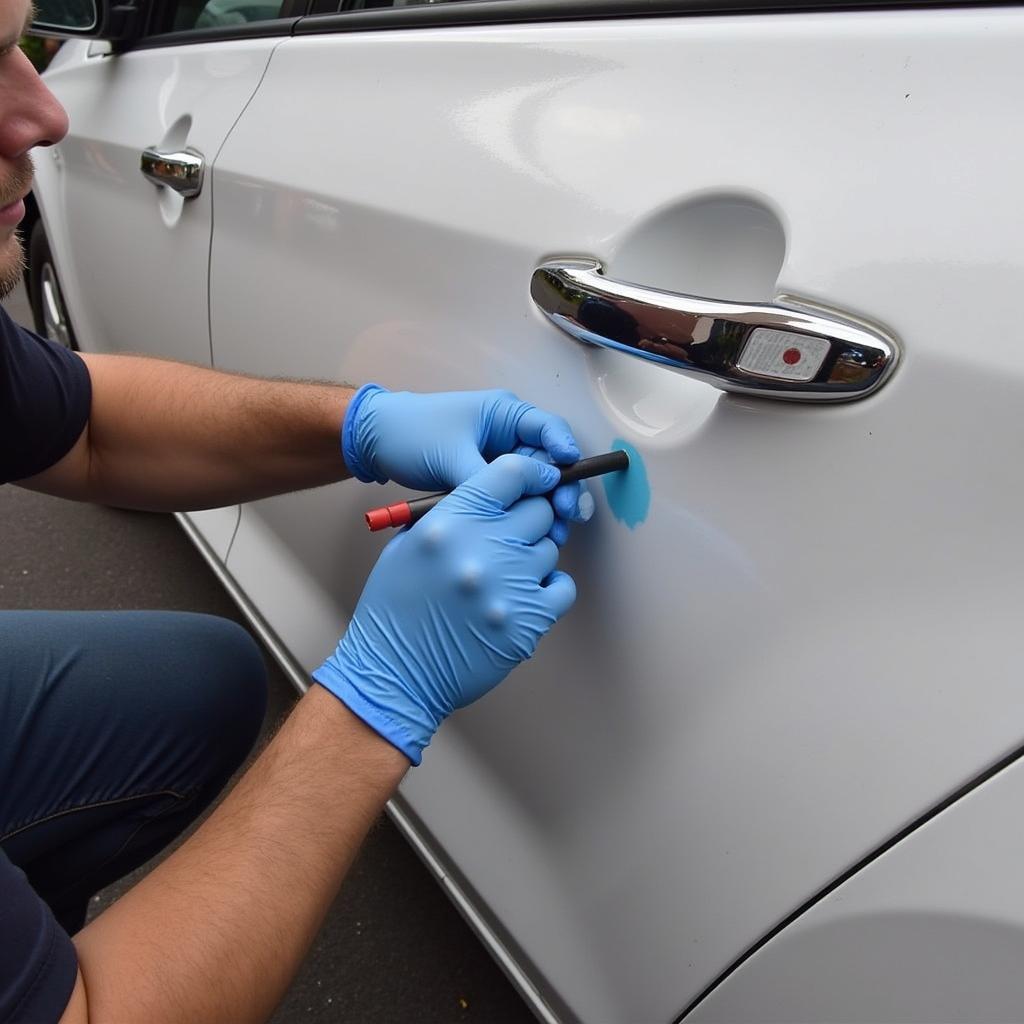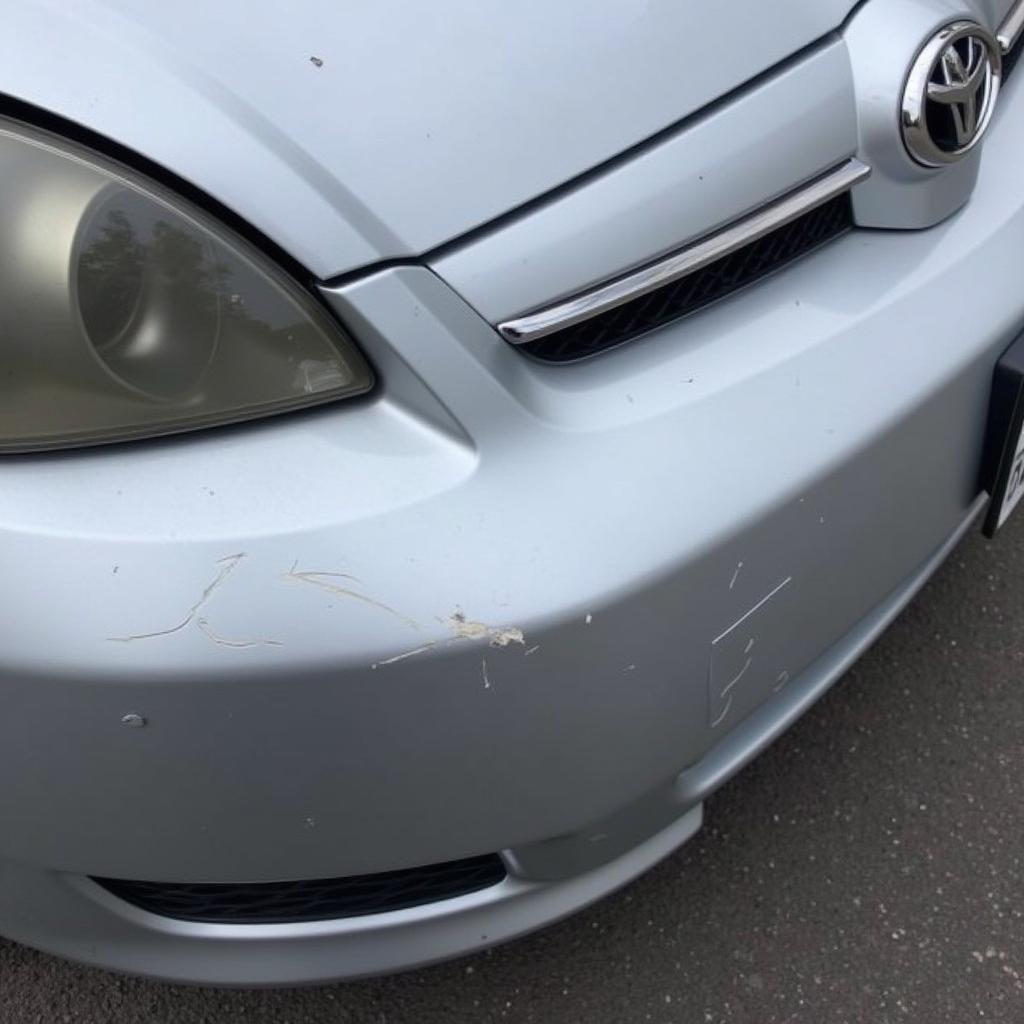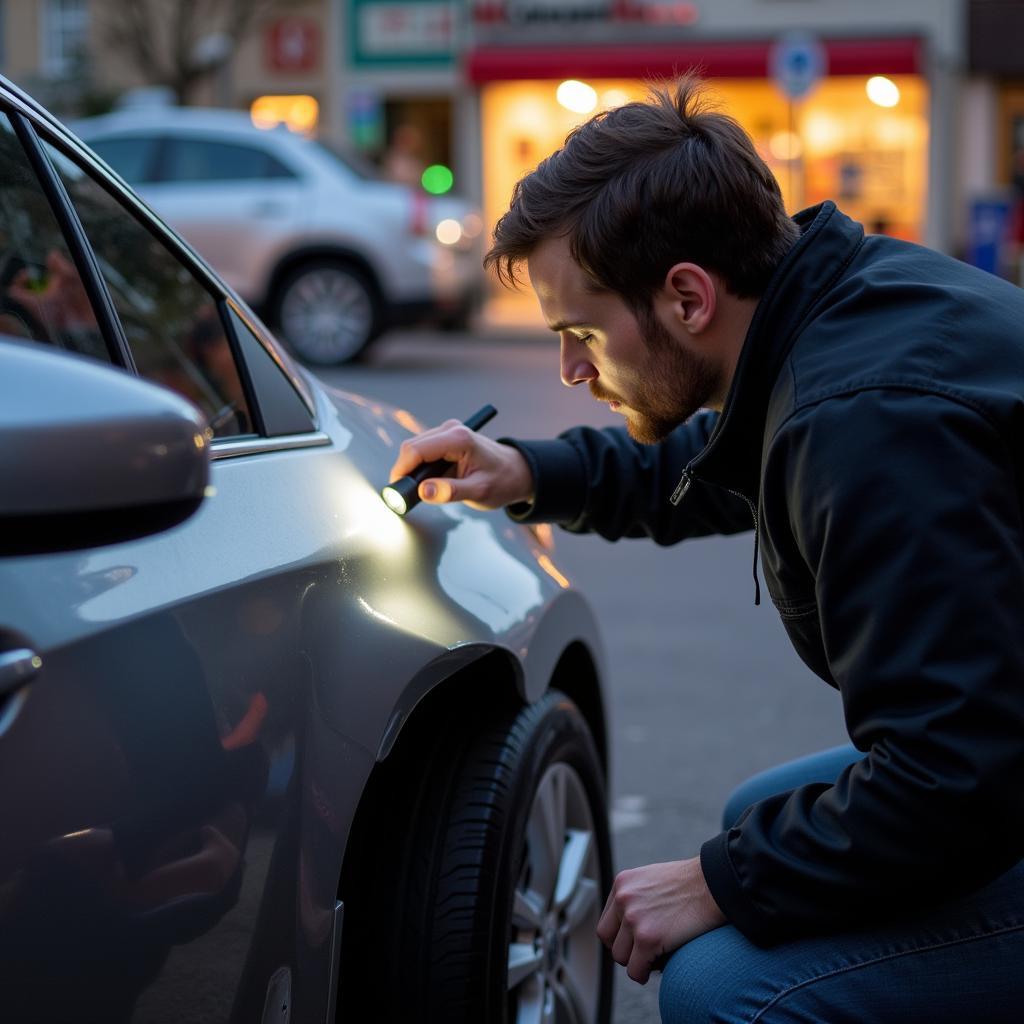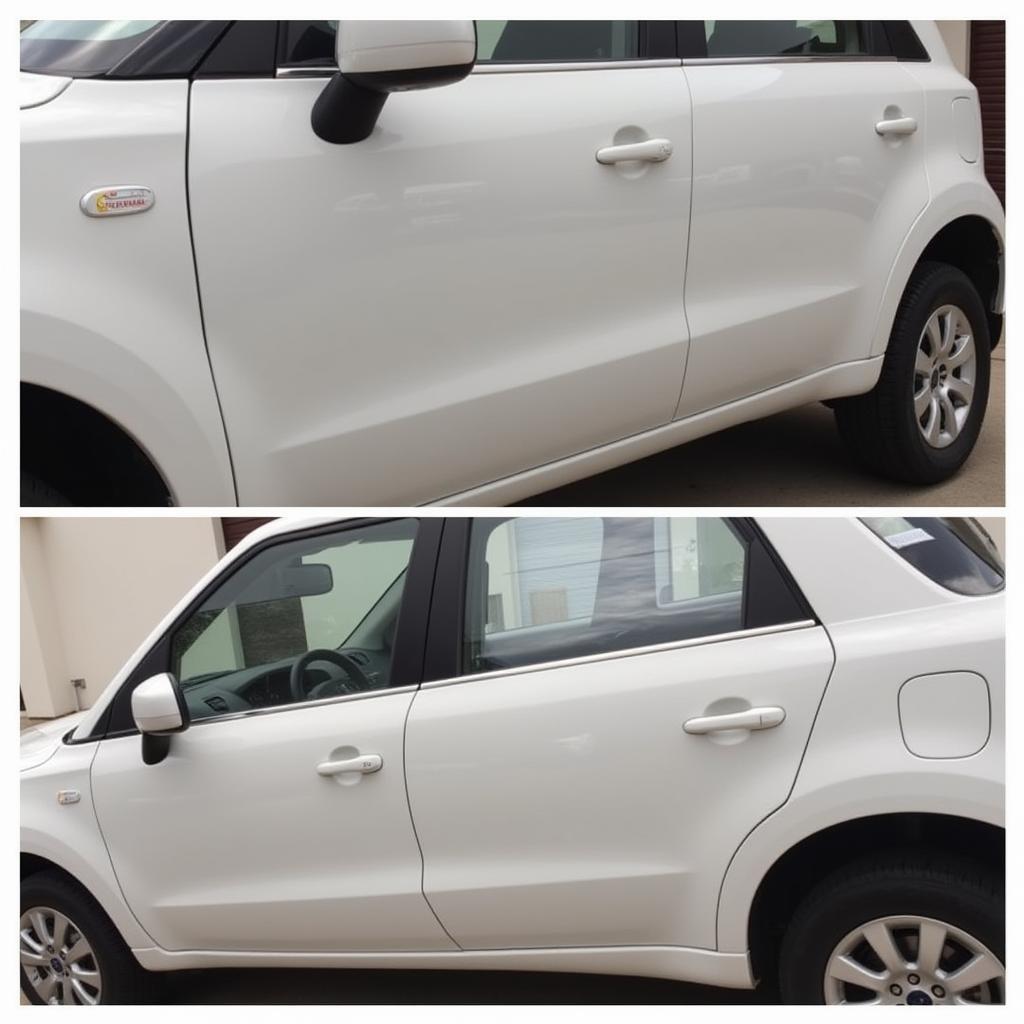Sanding marks in your car’s paint can be a real eyesore. Whether from a botched DIY repair or an unfortunate incident, these imperfections detract from your car’s appearance. Fortunately, removing sanding scratches from car paint is often achievable with the right approach and a little patience. This guide will provide a step-by-step process on how to repair those pesky sanding marks and restore your car’s finish.
After the initial sanding, if imperfections remain, you can use a finer grit sandpaper (e.g., 2000-grit) to further refine the surface. Remember to sand lightly and evenly to avoid creating new scratches. Wet sanding is recommended at this stage as it helps to lubricate the surface and prevent further damage. This meticulous process ensures a smooth finish before moving to the next step. ca car paint scratch repair
Identifying the Depth of the Sanding Marks
The first step in repairing sanding marks is determining their severity. Light sanding marks might only affect the clear coat, while deeper ones can penetrate the base coat or even the primer. This assessment dictates the necessary repair approach.
Shallow Sanding Marks:
These appear as light swirls or hazy patches and typically only require polishing or compounding.
Moderate Sanding Marks:
These are visible scratches that haven’t penetrated the base coat. They necessitate wet sanding and polishing.
Deep Sanding Marks:
These expose the primer or bare metal and require repainting the affected area.
Gathering the Necessary Materials
Before you begin, assemble the following:
- Various grits of sandpaper (e.g., 1500, 2000, 3000 grit)
- Rubbing compound
- Polishing compound
- Car wax
- Microfiber towels
- Sanding block
- Spray bottle with water
- Masking tape (if necessary)
Step-by-Step Guide to Repairing Sanding Marks
How Do I Repair Light Sanding Marks?
For light sanding marks, start with a polishing compound and a microfiber towel. Apply a small amount of compound to the affected area and work it in circular motions using moderate pressure. Wipe away the excess compound with a clean microfiber towel.
How Do I Fix Moderate Sanding Marks?
Moderate scratches require wet sanding. Start with 1500-grit sandpaper and gradually move up to finer grits (2000, then 3000). Keep the surface lubricated with water. Follow this with polishing and compounding as described above.
Deep sanding marks require professional attention. A visit to a reputable auto body shop is recommended. car paint repair norwich offers excellent services for such repairs. Attempting to fix deep scratches without proper expertise can worsen the damage.
What is the Best Way to Prevent Sanding Marks?
Prevention is always better than cure. When sanding your car’s paint, always use the correct grit sandpaper and a sanding block to ensure even pressure distribution. Avoid excessive pressure, and always work in the direction of the existing scratch.
“When dealing with car paint repair, patience is key,” says John Smith, a veteran auto detailer with over 20 years of experience. “Rushing the process can lead to further damage and more costly repairs.”
Protecting Your Car’s Paint After Repair
Once you have successfully removed the sanding marks, protect the repaired area with a high-quality car wax. This will help to seal the paint and prevent future damage. Regular waxing will maintain the shine and protect the paint from environmental elements. black car paint repair can be especially tricky, so proper aftercare is crucial.
“Protecting your car’s paint is an ongoing process,” adds Jane Doe, another experienced auto detailer. “Regular washing, waxing, and avoiding harsh chemicals will keep your car looking its best.”
Conclusion
Repairing sanding marks in your car paint can be a manageable DIY project, especially for minor imperfections. By carefully assessing the depth of the marks and following the correct procedures, you can restore your car’s finish to its former glory. However, remember that deep scratches require professional expertise. Don’t hesitate to seek professional help when needed. How Do I Repair Sanding Marks In My Car Paint? With patience, the right tools, and a little elbow grease, you can achieve impressive results and enjoy a blemish-free car.
FAQ
-
Can I use toothpaste to remove sanding marks? While some people claim toothpaste can remove minor scratches, it’s not recommended for sanding marks as it can be abrasive and cause further damage.
-
What grit sandpaper should I use for wet sanding? Start with 1500-grit and progressively move to finer grits (2000, then 3000).
-
Do I need a special type of car wax after repairing sanding marks? A high-quality car wax designed for clear coat protection is recommended.
-
How often should I wax my car? Waxing every three months is generally recommended. car scuff paint repair might require more frequent waxing depending on the severity of the scuff.
-
What if the sanding marks are too deep to repair myself? Contact a professional auto body shop for deep sanding mark repair. best paint scratch repair deep car offers solutions for deeper scratches that might require repainting.
Need further assistance? Reach out to our 24/7 customer support team via WhatsApp: +1(641)206-8880 or Email: [email protected].

